Road bike vs gravel bike: what are the differences?
Road bikes vs gravel bikes, they're similar looking, yet very different bikes, let's delve into the differences
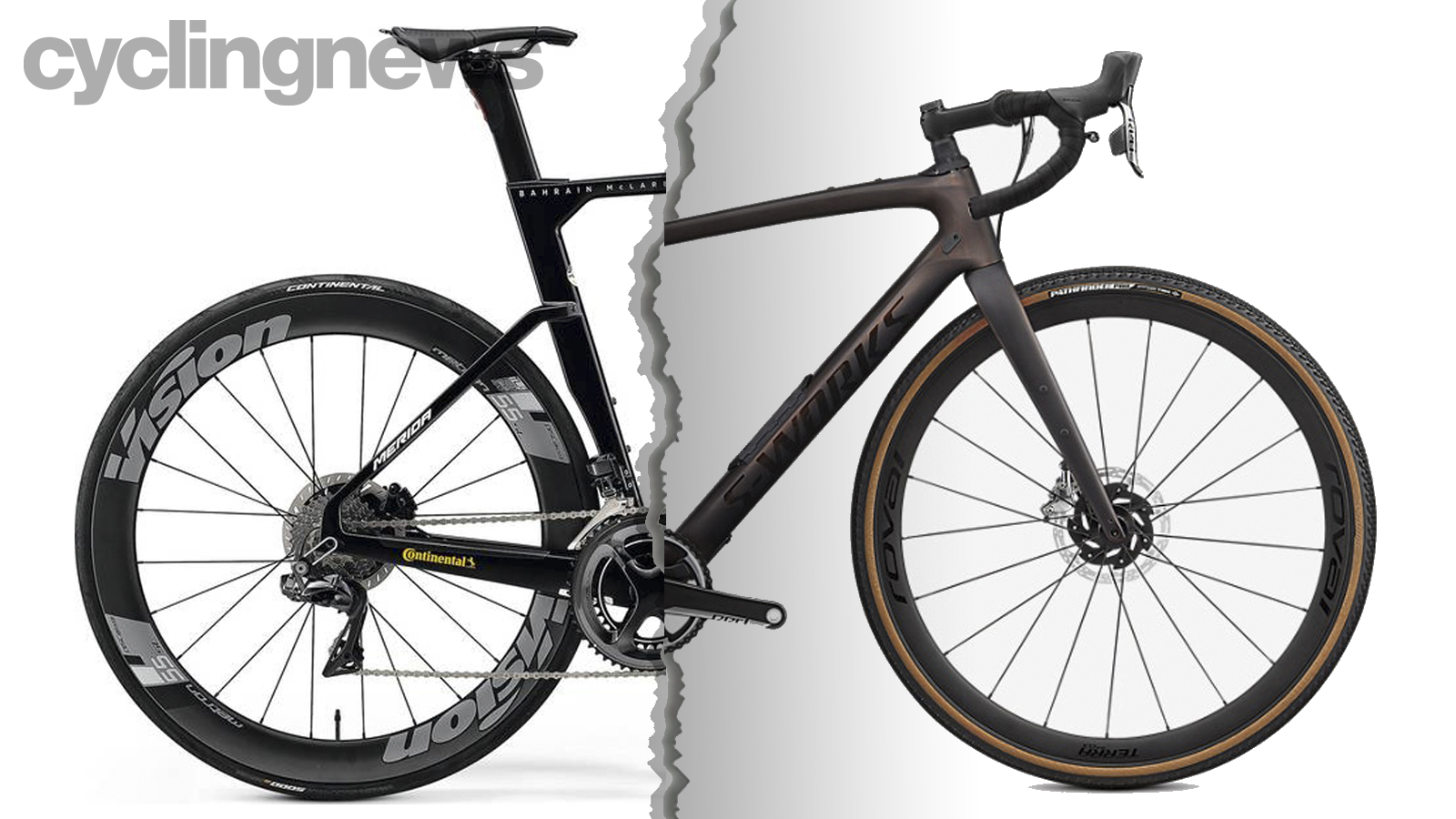
The differences between a road bike and a gravel bike may, at first glance, look small.
Both have drop handlebars, a racy ride position and similar-looking gears and tyres. But there are subtle differences which, in sum, make road bikes and gravel bikes very different beasts.
In the same way that a cross-country mountain bike differs from a trail or enduro bike, the best gravel bikes and the best road bikes exhibit a wide variety of design elements which allow each to excel in a specific arena.
We'll run through why road bikes and gravel bikes are different and the key features that differentiate them, so you can choose whether a road bike or a gravel bike is the best bike for you.
Road bike vs gravel bike: What are they supposed to do?
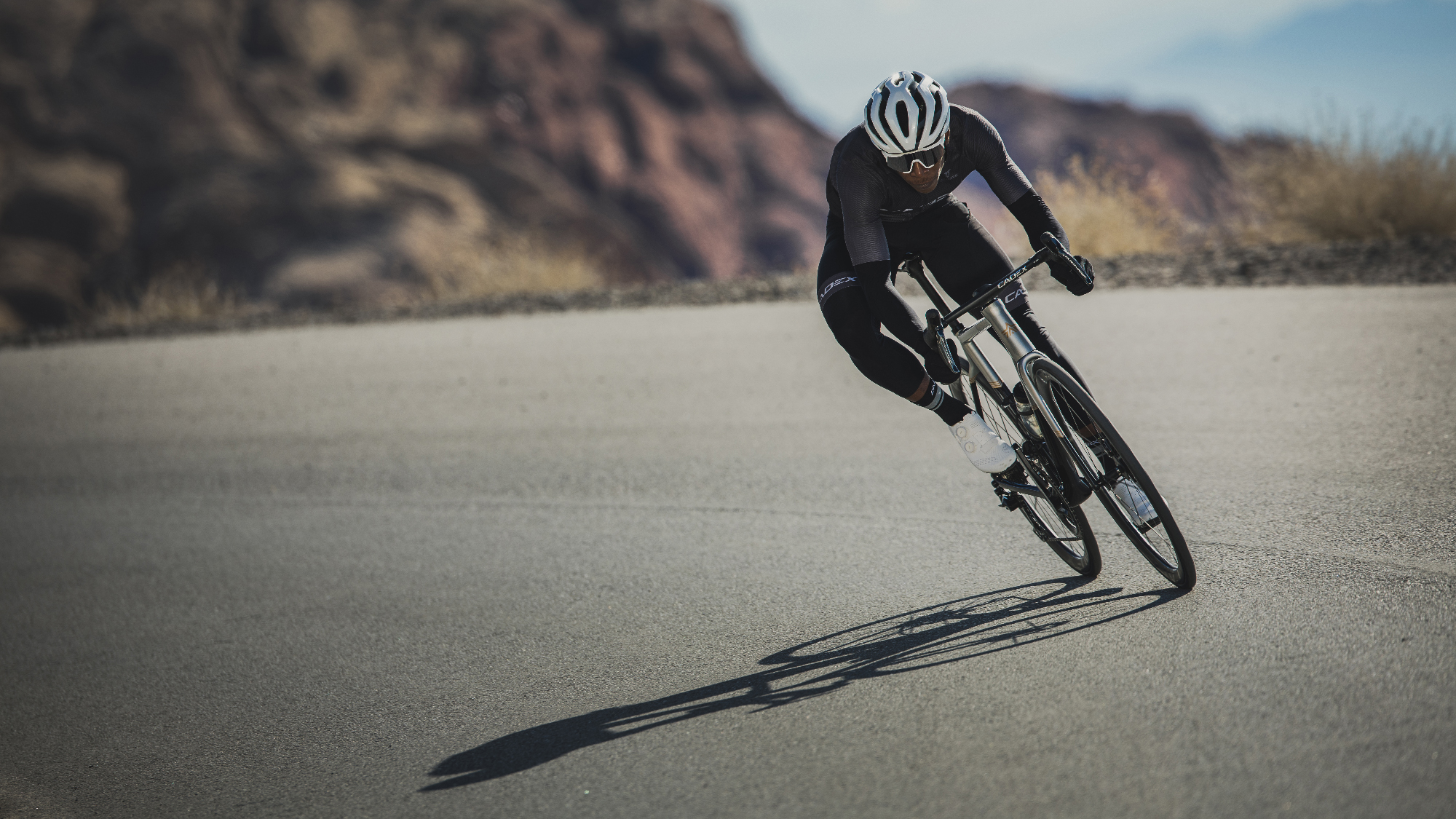
As you can probably work out from the name, road bikes are designed to be ridden on routes with a tarmac bias, while gravel bikes can be taken off-road, on gravel paths, dirt roads, fire trails, and even singletrack.
That’s not to say that road bikes can’t be used for some gravel riding — heck, every year, the pro racers take their race bikes onto the white gravel roads around Siena, Italy for Strade Bianche. Road bikes are considerably more capable than we often give them credit for, but they do have a well-defined limit, one which you will quickly establish once you venture onto loose gravel roads.
Road bikes mainly fall into two camps, race bikes, and endurance bikes, although there are other types of road bike.
The latest race content, interviews, features, reviews and expert buying guides, direct to your inbox!
Race bikes are what you see the pros pushing to the absolute limit and feature aggressive angles, low weights, and tube shapes and components designed to reduce aerodynamic drag, as seen on the best aero road bikes. Endurance bikes are a bit more upright, feature more stable handling, put a premium on comfort, and may have built-in storage and mounts for racks and fenders.
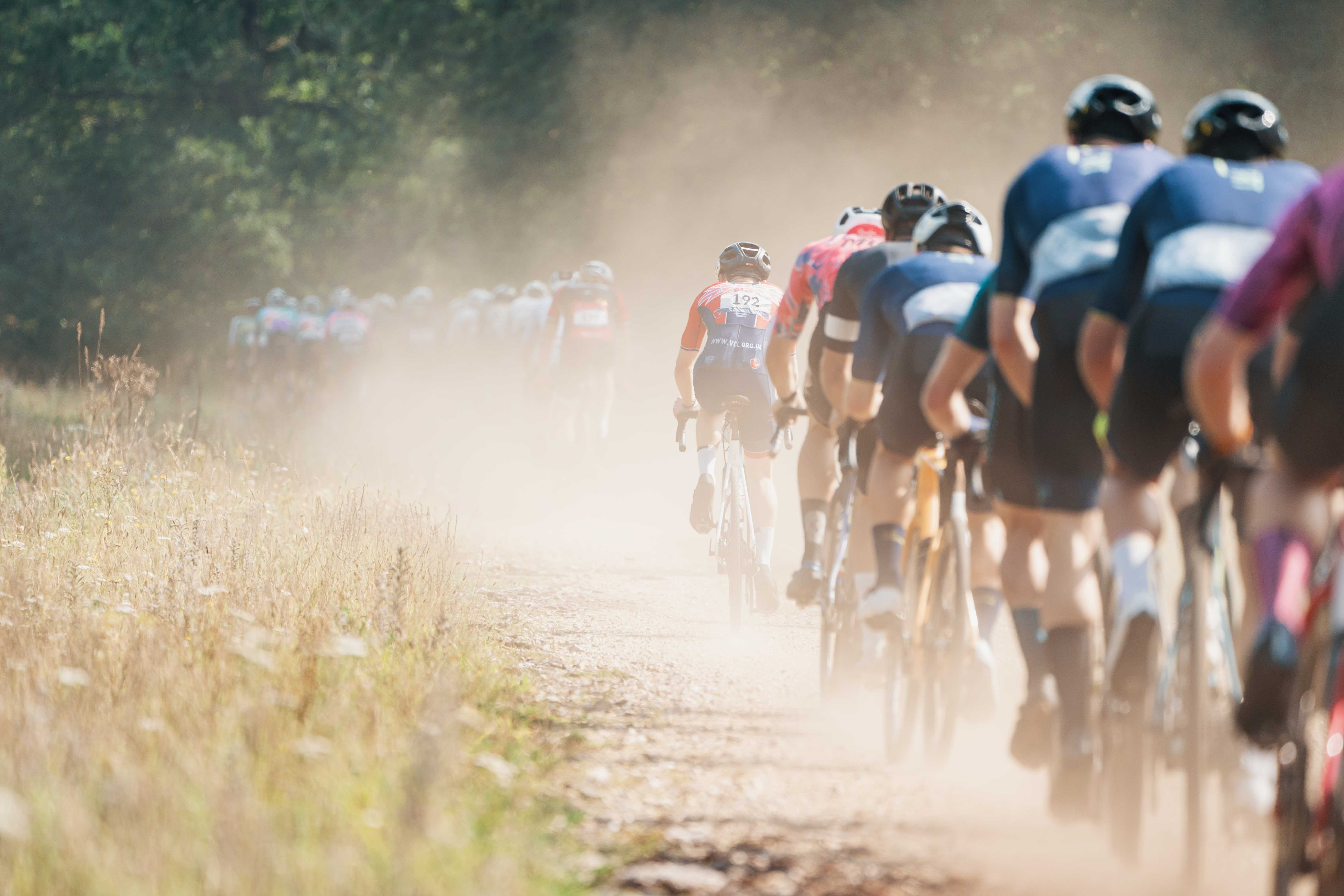
Gravel bikes, on the other hand, are designed to be more capable and tackle a wider variety of terrain. They can happily progress on the tarmac or jump onto the back of a group ride, but if you plan to pin on a number for a Tuesday night crit, you will find yourself under-gunned on even the best gravel bikes.
There's increasing differentiation between gravel bikes, with gravel race bikes such as the Specialized Crux favouring low weight and often adding aero features. Other gravel bikes are built with more of an adventure focus, as we found out in our Merida Silex 8000-E review. They will usually have mounts galore for bottles, luggage, and fenders and will usually be a bit heavier than their tarmac-faring relatives.
This weight is higher, too, because the frame will be reinforced to deflect airborne debris and withstand the rough and tumble terrain found once you leave the tarmac, but the additional grams also help with stability. Ultra-lightweight bikes can get bounced around when the terrain gets spicy, while something slightly heavier will remain more composed.
Wheels and tyres
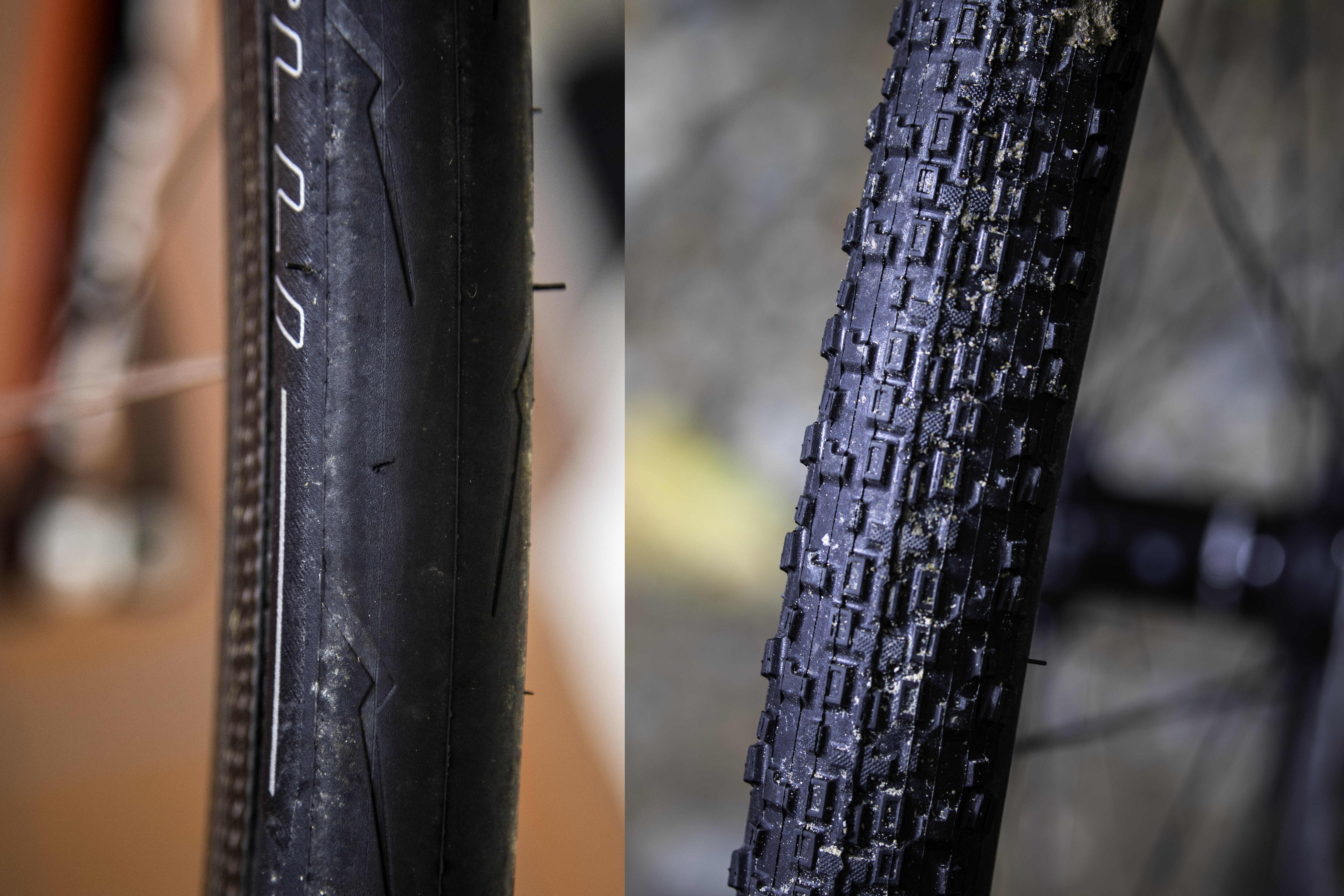
The most visually striking difference between a road and a gravel bike will be the wheels and tyres. Road bikes will usually have an absolute max tyre clearance of around 33-35mm depending on the category, with most erring on the side of slightly narrower rubber. These days, most race bikes will come stock with 28mm tyres, with room for 32mm, while endurance bikes will have wider rubber.
Wider tyres allow for lower pressures, which creates a wider contact patch for more grip and comfort. Lab testing has established that fatter tyres can also make for less rolling resistance.
However, wider tyres are often heavier, and depending on the rim, may mess with the aerodynamic mojo of your wheelset — today's best road bike wheels are designed to spread a 25c or 28c casing to sit flush with the rim; too wide, and the tyre will balloon out over the side and form a lightbulb-like shape.
On the other hand, gravel bikes will have clearance for 35mm tyres all the way up to casings that are measured in inches, and gravel frames may even be compatible with both 700c wheels and smaller diameter 650b (27.5in) wheels and tyres. Like with road tyres, the broader contact patch and lower tyre pressures make for improved comfort and grip, and the additional width will also make negotiating uneven surfaces a bit less technical.
The tread pattern is a much bigger consideration on gravel bikes than it is on road bikes. Tread on the best road bike tyres doesn't add much in the way of grip, hence why they're more or less smooth.
Gravel bikes are designed to venture onto softer surfaces, and as such, they feature tread and knobs that can dig into off-road surfaces. There is a massive range of tread patterns available for the best gravel tyres, and which is right for you depends on the weather, where you plan to ride and what the terrain looks like.
Many gravel bikes will also have the ability to be used with a 650b (27.5in) wheel and tyre combo. This smaller wheel allows for a wider tyre, in the ballpark of two inches, allowing for lower tyre pressure and more comfort and grip. This is possible because a 700x28-30mm tyre is approximately the same diameter as a 27.5x1.6in-1.8in tyre, which means that it won’t change the head angle or trail figure, and should not have a drastic effect on handling characteristics.
To maximise clearances for such wide tyres, and the mud and debris that will eventually build up on the frame, gravel bikes will occasionally feature a dropped drive-side chainstay or machined yoke behind the bottom bracket — these same features are also used to improve chainring clearance.
The other thing to note about gravel and road tyres is the proliferation of tubeless. As the best tubeless road tyres continue to get better with each iteration, the technology is becoming more and more prevalent on the road. However, off-road where punctures are much more commonplace, pretty much all of the best gravel tyres are tubeless by default.
Geometry
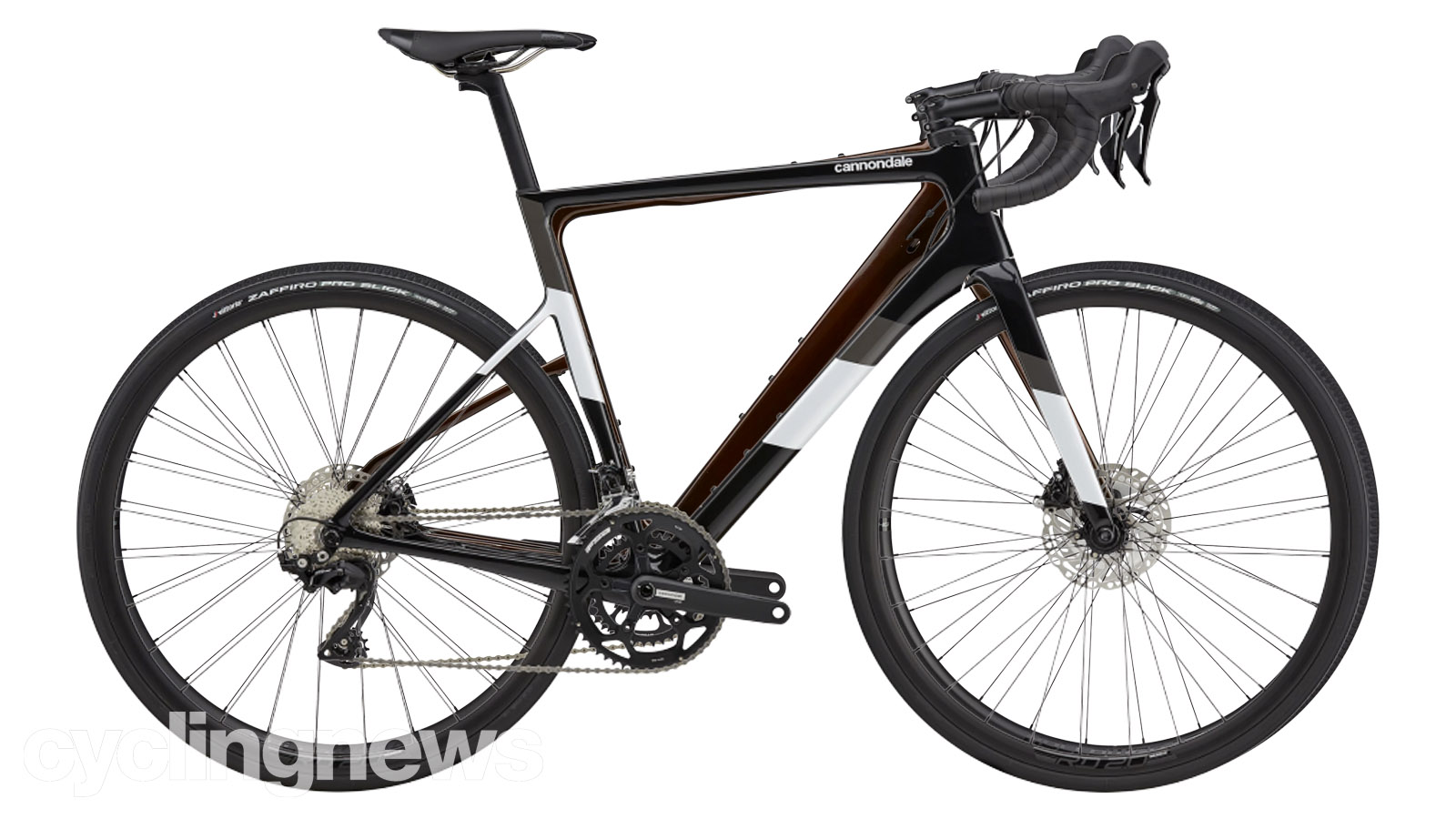
You likely won’t be able to spot the geometry differences between a road bike and a gravel bike unless you have one of each right next to one another - the nuanced differences and a few millimetres here or half a degree there - but these will have a drastic effect on the way a bike behaves.
Road bikes will typically have a short wheelbase and steeper angles for nimble ride quality and lively handling. Gravel bikes have a longer wheelbase and slacker head angle to add stability and slow down the handling for negotiating technical obstacles and loose descents.
For example, a Specialized Roubaix endurance road bike has a head-angle of 72.75 degrees and a wheelbase of 988mm in size 54; meanwhile, a Specialized Diverge gravel bike has a slacker 71.75-degree head-angle and 1032mm wheelbase in the same size.
Road bikes will also have a longer reach and lower frame stack and head tube to facilitate a longer, lower, more aero position, while gravel bikes are shorter and more upright. If you want more information read our how to measure a bike frame article.
Suspension

Suspension has been a mainstay of mountain biking for quite some time. However, various forms of suspension are available across both road and gravel bikes — the breadth of which across both categories is surprising.
Specialized uses a damped coil shock, dubbed the Future Shock, on the front end of both the Roubaix SL8 endurance road bike and the Diverge, as shown in more detail in our Specialized Diverge review.
Trek and Cannondale both have their own take on pivot-based flex suspension for the rear; the IsoSpeed decoupler found on the Domane endurance road bike and Checkpoint gravel bike, and the Kingpin thru-axle pivot on the Topstone Carbon gravel bike.
Gravel bikes, however, are the only lot to see air-sprung forks, with Cannondale offering its 30mm Lefty Oliver on specific models of the Topstone - shown in our Cannondale Topstone Lefty 3 review, Fox offering its 32 AX (Adventure Cross) gravel fork, and RockShox offering the Rudy XPLR which sit amongst the best gravel suspension forks.
Components
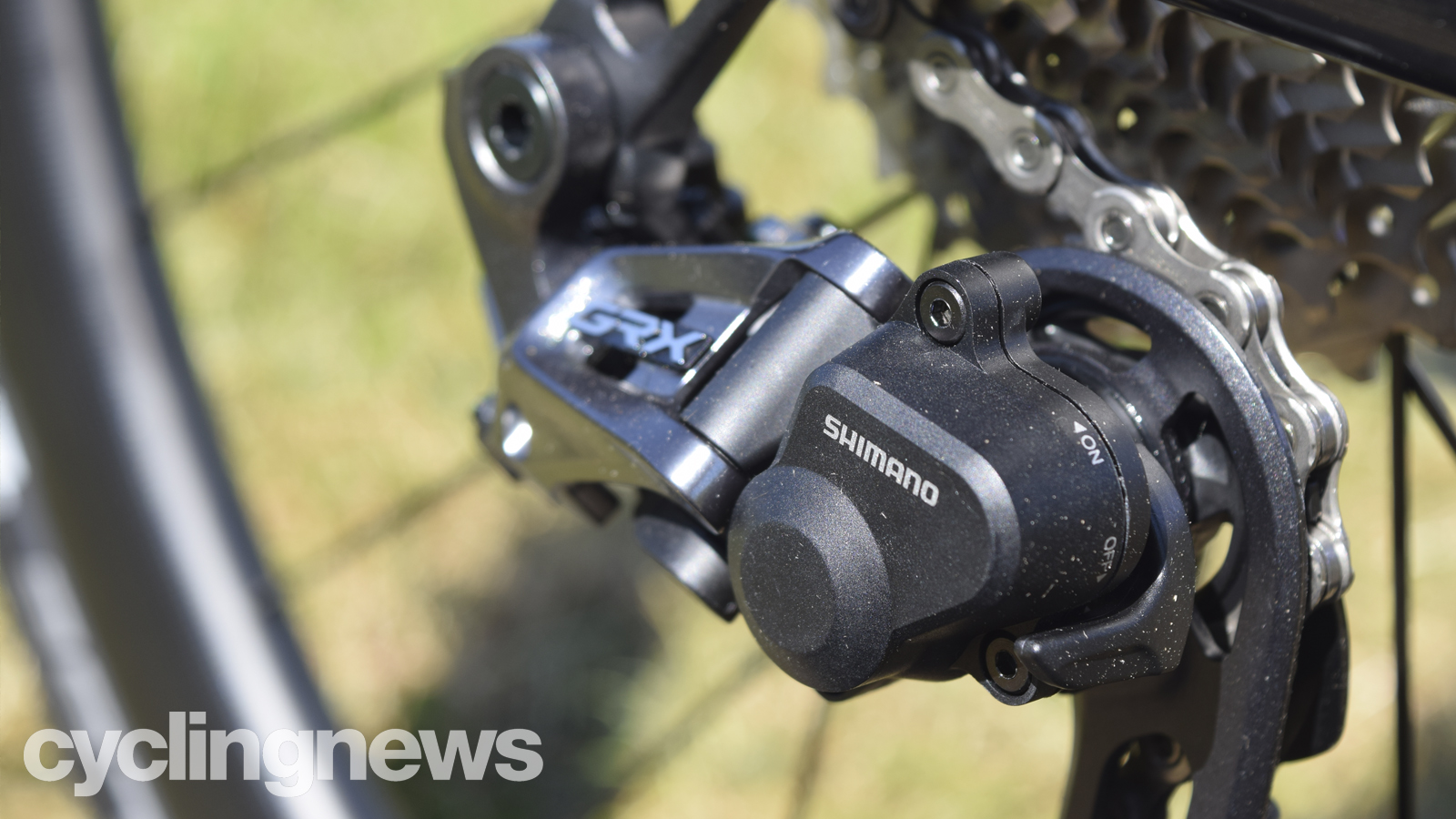
Most of the components found on a gravel bike will be compatible with a road bike and visa-versa; however, there are key differences that prevent a gravel bike from falling to pieces when the going gets rough or help a road bike to dance up the slopes of Mont Ventoux.
Most road bikes and the best road bike groupsets now include disc brakes and they're a feature of every gravel bike. Rim brakes may be lighter and work just fine riding on tarmac, but discs provide superior power, modulation, and control, are less prone to contamination and consistently perform across all weather conditions. You will appreciate this added control when you are picking your way down a technical descent on your gravel bike, especially in the wet.
Both road and gravel bikes may sport 1x (with a single chainring) and 2x (with two chainrings) drivetrains. Road bikes tend towards two front chainrings, as the jumps between gears are smaller, meaning it’s easier to find a comfortable cadence at any speed.
Gravel bikes may have either 1x or 2x drivetrains with a slight bias towards 1x. With only a single front chainring, 1x drivetrains are still capable of achieving the same gear range as 2x, though to do this in 11 or 12 gears instead of 22 or 24 means the gaps between each ratio will often be more significant. Eliminating the need to shift at the front has allowed drivetrain manufacturers to employ narrow-wide chainrings, which feature alternating teeth profiles that grip the inner and outer chain links to prevent the chain from bouncing off over rough terrain. There's also less to go wrong or get clogged up and better tyre clearance.
Bikes equipped with Shimano gravel groupsets or those from SRAM and Campagnolo typically feature a rear derailleur with a clutch. Whether it’s of the roller bearing or fluid damper variety, the primary function is to pull the chain taut to prevent chain slap on the bike frame or it bouncing off the front chainring. These are usually a few grams heavier than their non-clutched compatriots but the difference in chain retention is night and day.
Cockpit and seat post
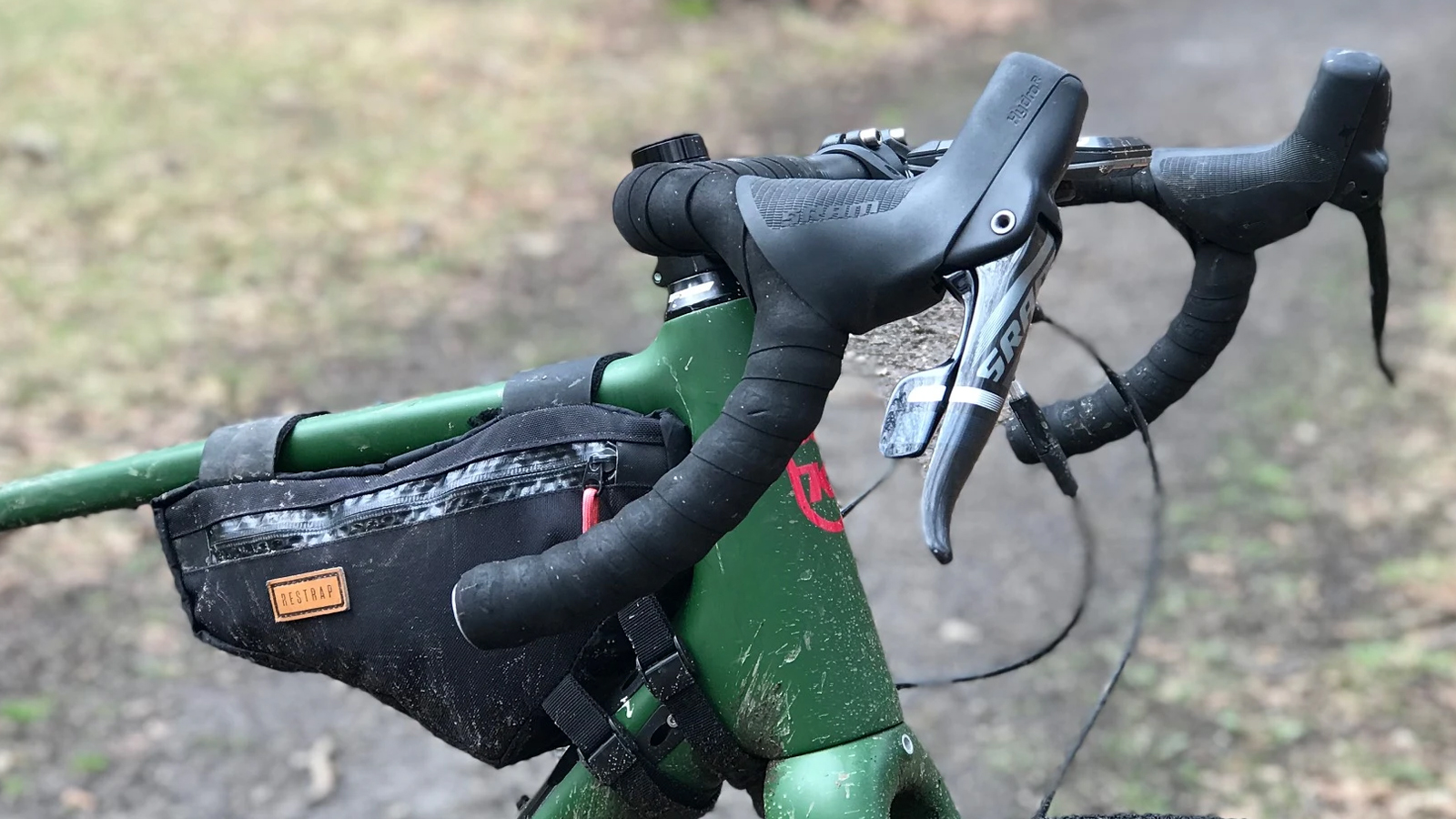
Many of the best gravel handlebars will be flared, and often they'll be paired with shorter stems than the cockpits you'll find on road bikes. Drop bars on road bikes will typically have a deeper drop and a slightly longer reach than those usually found on gravel bikes.
Flared drop bars place your hands in a broader position, allowing clearance for your wrists and added control when navigating your way through loose corners or up and over obstacles. The flare also makes it easier to reach the brake levers from the drops and allows you to fit a bar bag more easily for ride essentials or bikepacking.
The last and most controversial component difference you’ll find on some gravel bikes is a dropper seatpost. These are seen as a must-have for mountain bikers and have even made an appearance on neutral support bikes to help riders dial in their saddle height on the fly, but that’s not their intended purpose. The idea behind a dropper post is to move the saddle out of the way on steep descents so you can get your weight back to prevent being catapulted over the handlebars.
On a paved road, you’re unlikely to come across a gradient steep enough or a road surface that's so broken that you will need to get behind the saddle, but it’s not uncommon to find fire roads that are plenty steep and rough enough to warrant dropping your saddle out of the way.
Having said that, a dropper post was used by one pro to win a prestigious race a few years ago.
Paul has been on two wheels since he was in his teens and he's spent much of the time since writing about bikes and the associated tech. He's a road cyclist at heart but his adventurous curiosity means Paul has been riding gravel since well before it was cool, adapting his cyclo-cross bike to ride all-day off-road epics and putting road kit to the ultimate test along the way. Paul has contributed to Cyclingnews' tech coverage for a few years, helping to maintain the freshness of our buying guides and deals content, as well as writing a number of our voucher code pages.
